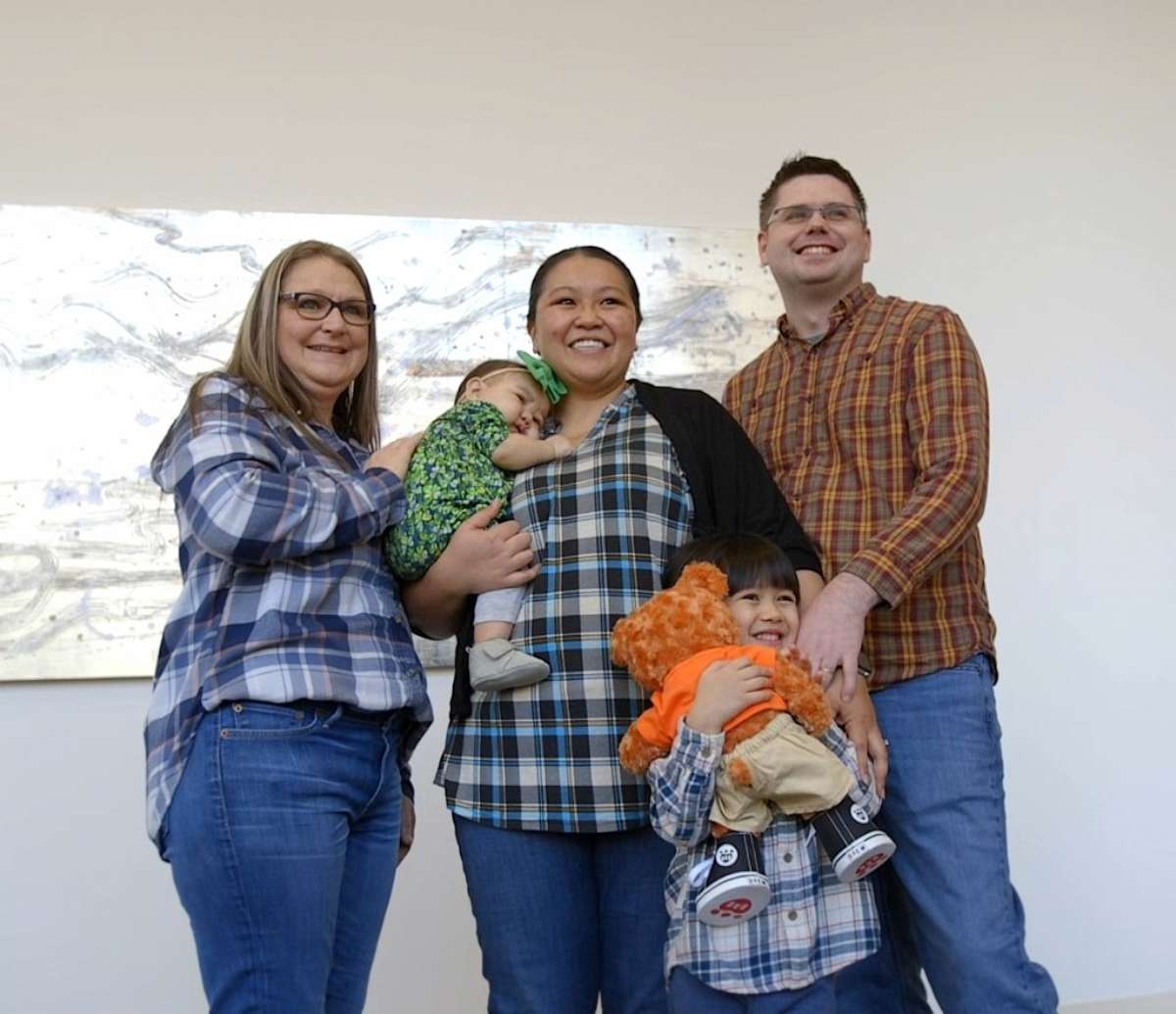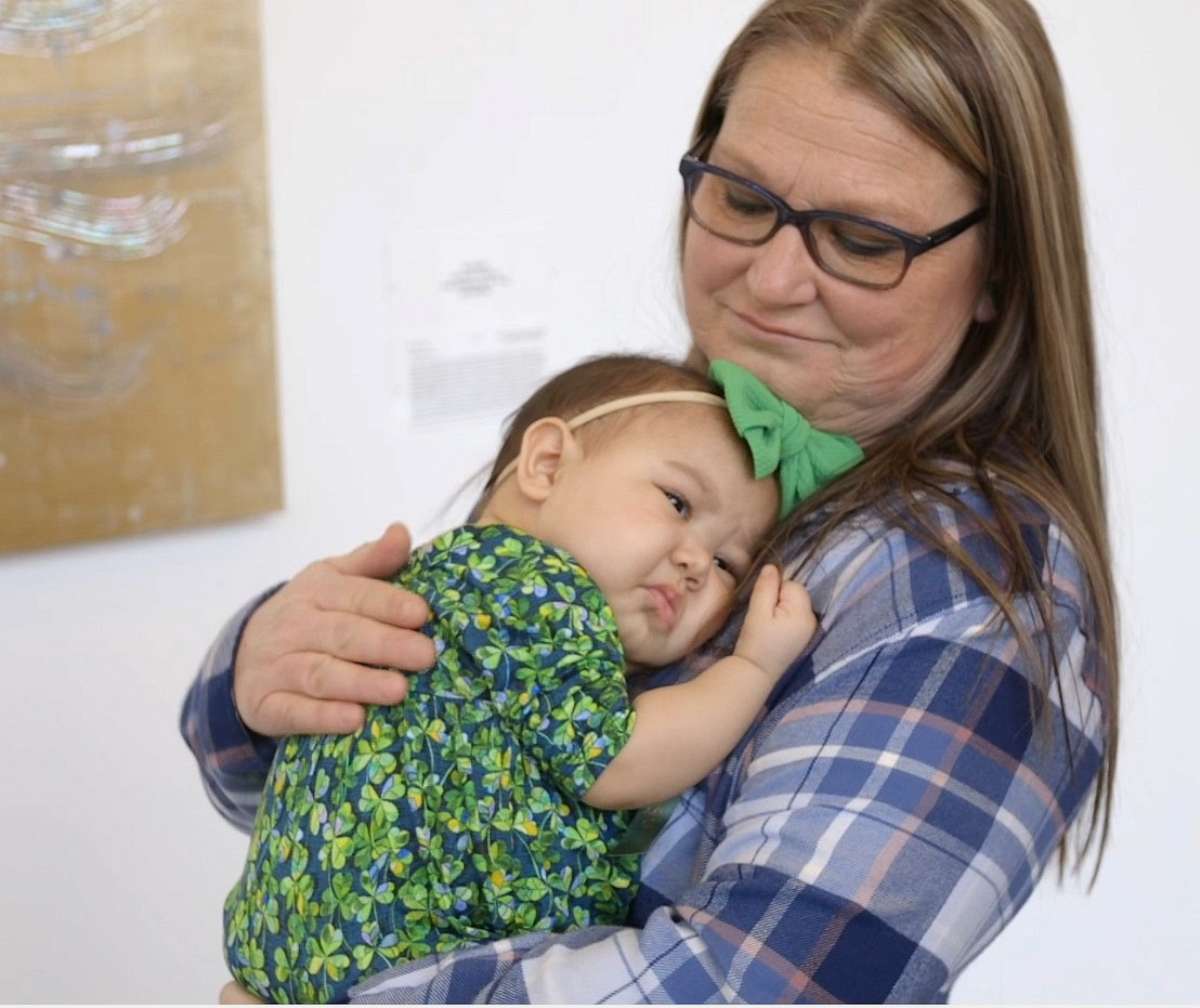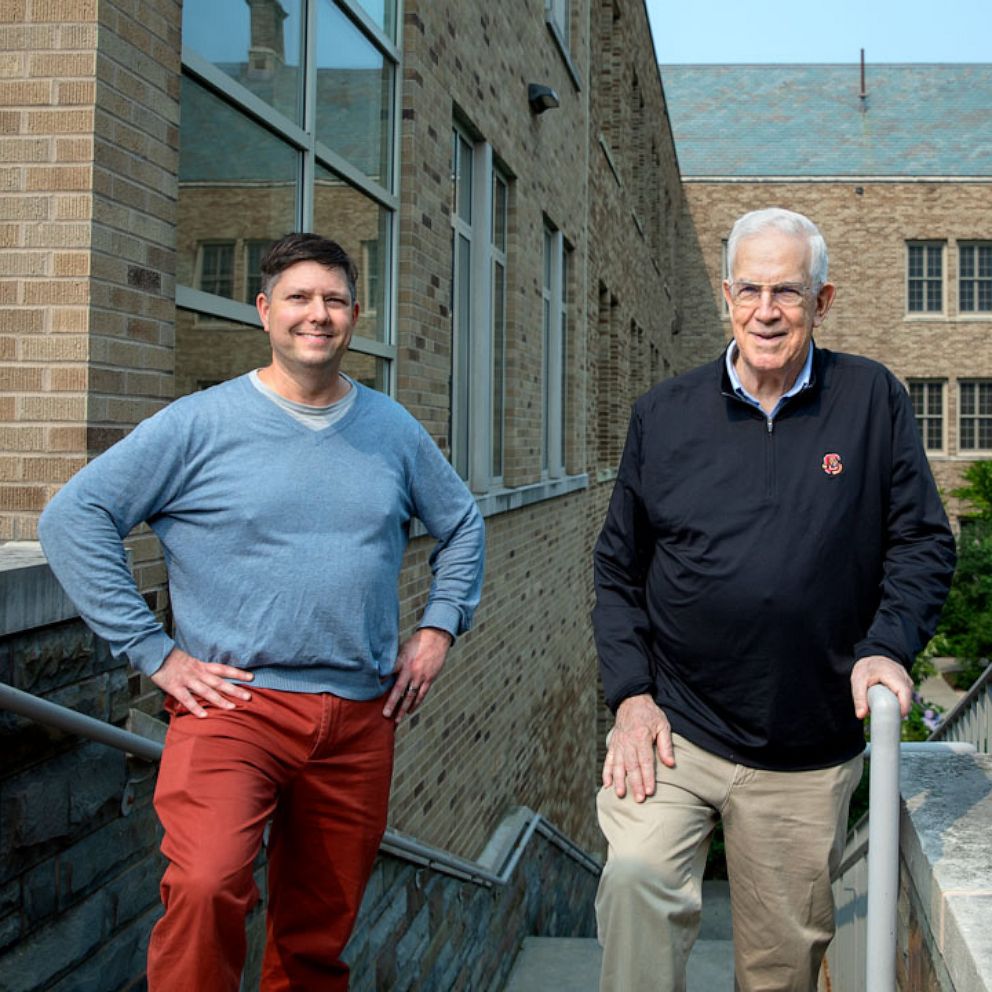Infant meets woman who saved her life by donating a piece of her liver
Lori Seitz also donated her kidney to her brother.
A nearly 1-year-old girl who was diagnosed with a life-threatening liver condition shortly after birth was able to meet the woman who saved her life.
Tricia Terao-Murphy said her daughter Emma, who will turn 1 on March 17, appeared healthy at birth but was soon after diagnosed with biliary atresia, a condition in which the ducts, or tubes, that carry bile from the liver are blocked and bile continues to build up, according to the National Institutes of Health.
The cause of biliary atresia is not known, but it is often diagnosed after the infant develops jaundice, according to the NIH, as was the case with Emma.
"As far as we knew she was born healthy and everything was going well, but we kind of realized that she was looking a little jaundiced and she was having a little bit of trouble gaining weight," Terao-Murphy said in a video shared by Cleveland Clinic, where Emma was treated. "One day we just decided to take her into urgent care just to make sure that it was just the lighting in our house and, you know, a mother's mind, but unfortunately, it didn't pan out that way."
Because of the continuous accumulation of bile, biliary atresia can lead to liver damage, including permanent scarring of the liver, according to the NIH.
In Emma's case, doctors determined she would need a liver transplant.
Last November, an anonymous donor stepped forward and donated a piece of her liver to Emma, who was just 7-months-old at the time of the transplant.

Doctors at Cleveland Clinic performed the living donor surgery using a relatively new laparoscopic procedure that required only a few small incisions.According to Cleveland Clinic, only about 5% of people who undergo a liver transplant receive the organ from a living donor.
A living donor is able to donate just a part of their liver because the remaining liver regrows to its normal size and capacity within a few months, and the donated portion of the liver also grows and restores normal liver function in the recipient.
Terao-Murphy said that because Emma's donor was anonymous, she and her husband wondered who the person was who had saved their daughter's life.
"We had talked about who we thought it could be. Is it a male or female? Is it somebody who had a transplant recipient in their family?" she said. "We still are blown away by the fact that somebody out there, and there are many people out there now, that could just, out of the kindness of their heart, risk going under the knife to try to save another person's life."
Emma's donor was Lori Seitz, a stranger to the Terao-Murphy family who became a second-time donor when she gave a piece of her liver to Emma.

Two years prior, in 2020, Seitz donated her kidney to her brother, who needed a lifesaving transplant after doctors found a cancerous mass on one of his kidneys.
"I had no clue at that time what anything would be, what to expect," Seitz said in a video shared by Cleveland Clinic. "I just knew that my brother could pass away because of the issue that he had, and I would do anything and everything to make sure that was not going to happen if at all possible."
Seitz said that while she was in the hospital recovering from the kidney transplant, she decided she wanted to donate again.
"I got to see how well [my brother] was doing with the new organ and it was just an amazing experience for me and I said, 'Well, I'm going to try to donate my liver,'" Seitz said. "When I found out that I was able [to donate], it was a blessing to me, that I knew that I would be able to save another person's life with just mine."
Last month, Seitz got to meet Emma and her family for the first time, and Seitz was able to hold the infant who now has a piece of her liver.

One week after their first meeting, Seitz and Emma reunited again to celebrate Seitz's birthday, on Feb. 14.

Seitz's birthday falls on Valentine's Day and National Donor Day, a day to raise awareness of organ, eye and tissue donation, according to the Health Resources and Services Administration, the federal agency that oversees organ donation in the United States.
Currently, over 106,000 men, women and children are on the waiting list for an organ or tissue donation, according to the HRSA.
Editor's note: This was originally published on March 8, 2023.






